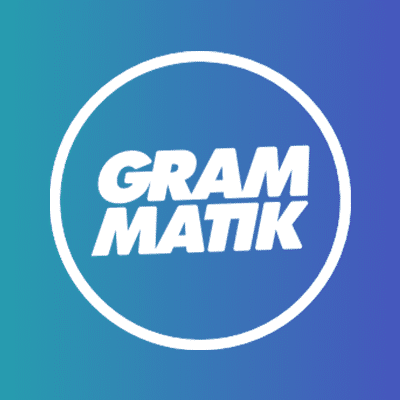TOP TIPS: Practical advice on landing pages
A lot of clients find marketing jargon confusing – or even just plain frustrating – but one of the most frequent culprits are “landing pages”. Have you ever tried explaining to a non-marketer what a landing page is? Or how to optimise it? Be prepared for vacant stares and vague nodding.
Like it or not, landing pages are one of the most useful, cost effective tools available to reach customers and generate leads for your business. That’s why Grammatik has put together this handy guide of practical advice – covering all the whats, whens and hows – to make you an instant landing page expert.
What is a landing page?
Simply put, a landing page is any page where visitors will first land when they reach your website. Unlike classic webpages which encourage exploration and feature in-depth content, landing pages are short, to-the-point and designed with a single goal in mind. As such, they are most often linked to a banner ad or overarching promotional campaign.
Beyond that, landing pages are also an important tool for inbound marketing and lead generation. By including a call to action (CTA) – such as a newsletter sign-up or a free trial button – landing pages provide a way to better your promote services or products. Using this CTA, whether your goal is to capture an email address or direct interested visitors to a retail portal, landing pages provide an invaluable advantage.
Essentially, a landing page sets potential customers on the path to purchase.
When do I need to use a landing page?
Landing pages are a common tool across every industry and are used for every engagement type. They can help you to sell products from a website, book a meeting or consultation, and even direct foot traffic to a storefront or event. Product sales is perhaps the most common use for a landing page, but the possibilities are near limitless:
- Gated content, such as white papers and ebooks
- Hosting a webinar
- Supplying free trials or demos
- Providing exclusive memberships or discounts
- Competition portals
- Newsletter sign-ups
- And much more!
For example, Grammatik found a unique way to use landing pages in this remarketing campaign for the video review application, Frankie. The client tasked us with increasing sales and awareness of Frankie by driving conversions from customers already familiar with the product. As such, we helped set up a landing page targeted two key segments: Lapsed customers and free trial users who subsequently failed to convert and become a retained subscriber.
Imagine any type of digital marketing campaign, and chances are a landing page can be used to support it on some level. Even if you’re still in the planning phase of a campaign, gathering customer data or segmenting a market, a landing page can be deployed to make the process easier.
What should it look like?
According to MarketingSherpa’s Landing Page Optimization Benchmarks Report, layout is a major factor in website performance.
Keep your landing page short and sweet to prioritise its visual impact, preferably with a relevant, eye-catching banner image. Visitors should be able to gather the main message of your landing page in under five seconds – less time than it takes to blink. You want to catch their attention and keep potential customers focused on the purchase path.
If you absolutely must include long-form content, then either keep it gated or offer visitors an incentive to stay on-page. For example, if you’ve got a long lead form that needs filling out, a reward or discount is usually required for visitors to fully engage with it. A lead form that sits above the landing page fold will also better capture visitors’ information. Just make sure you know exactly what type of information you want to capture – and what you want to do with it – before the campaign launches (i.e. emails, phone numbers, locations, company names, etc).
If your landing page is reached by clicking through from a banner or search campaign, then ensure the content matches the original advertisement. Promised a discount or download of some kind? Then follow through with a clear, clickable CTA. This will keep your bounce rate low and conversions high. CTAs on a landing page have been known to increase conversion rates by eighty percent. Message consistency is important on-page as well. If your heading reads differently than your CTA, it may lead to confusion, leaving visitors wondering whether they’ve linked through to the wrong page.
Finally, even after you’ve created what you think is the ideal landing page, be sure A/B test it. No web design is ever 100% perfect.. and online trends can change at the click of a button.
What results do I want?
What is a good average landing page conversion rate in 2020? While landing pages perform better than main website pages, at a conversion rate of 5-15% according to Hubspot, they can do much better if using the best practices. Some of the best landing pages we’ve seen convert at rates of up to 28%! That’s right, a good conversion rate is a lot higher than you may think.
Take our marketing campaign for Redshift GPU rendering software. We helped to create numerous new processes designed to increase website visitor, trial sign-ups and sales through the website. One such activity was launch day sale, complete with Google display ads and an associated landing page. The result? A 397% increase in registrations via trial and a 152% increase in unique website visitors.
A high-converting landing page can be the turning point – a major milestone – for your entire business. This is the place where visitors click, customers buy, and you gain both revenue and market data… so why not follow a little practical advice to make your landing pages as effective as possible?

©️2024 Grammatik Agency, Second Home, 125–127 Mare St, London E8 3SJ.
[email protected]
+44 (0)20 3950 7057 Privacy policy